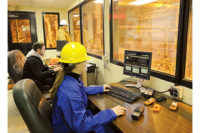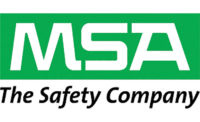Veterans will remember having to perform instrument calibration by adjusting potentiometers within the unit using a small, flat-blade screwdriver. This manual process required the user to make minor tweaks of the potentiometer to match the gas concentration found on the cylinder of gas.
The introduction of one-button technology was next, simplifying the process by eliminating the need to go within the detector to perform calibration and allowing it to be done easily by pushing a single button.
Today, the introduction of calibration and docking stations has provided gas detector users the tools needed to further simplify the calibration process. Here are three questions to consider in choosing equipment to calibrate your instruments.
Question 1: Calibration station versus docking station – Do you know the difference?
I hear many comments from gas detection users that “calibration” and “docking” stations are synonymous. This could not be further from reality. Both options provide an automated means of calibrating your gas detectors and providing the results, but calibration stations are generally stand-alone (non-networked) and require the manual push of a button to initiate the process. They require a non-automatic data download procedure prior to analyzing the data. Users must be trained and manually check calibration gas levels and expiration.
Docking stations provide an automated means of managing gas detector settings and calibration events through networked communication. Users can preset their calibration frequencies and instrument settings. Networked communication provides docking station users with the peace of mind that no matter where a unit is docked within the network it knows what to do and is controllable. This allows changes to instrument settings or operating systems to be done easily and without hassle. All data is downloaded automatically at the time of calibration and able to be analyzed.
Question 2: Gas detector data – Are you capturing all instrument data?
Gas detector data is a critical component of any successful gas detection program. Having access to and permanent records of calibration results is a start and in many cases required. It is important to not forget about the other data captured by the detector during use.
Calibration stations provide a record of data that confirms if the calibration was done and the results, but data collection generally stops there. A good docking station captures all data from the instrument automatically and upon the detector being docked. Gas detectors are completely ineffective if used improperly. Visibility into alarm events and unsafe behaviors — such as ignoring or turning off a gas detector while in alarm or using it without calibrating — is data needed to take corrective and preventive actions to keep people safe. Being able to recall and access this data in an easy-to-understand and comprehensive way is critical.
Question 3: Safe behavior – Do you have the ability to recall and use the data?
Having gas detector data available to recall and use is critical in identifying and understanding safe behavior. In many cases, having the data to recall is not enough. As is common in most professional positions, time is limited and analyzing data takes time.
Docking stations eliminate manual data download and, upon an instrument being docked, place the data within a data management system. This system organizes and makes instrument data available immediately via an “in-the-cloud” dashboard. The dashboard provides visibility into your gas detection program at a glance. The system should alert you when problems occur and allow you to quickly access the data to identify the root cause of the issue.
For your gas detection program and processes to improve, you must use the data available to you. A good gas detector data management system should provide full insight into the condition and proper use of your equipment and all gas hazards to which your team is exposed. This data can be used to discuss behavior and coach others on needed change that ultimately will lead to a safer workplace.


